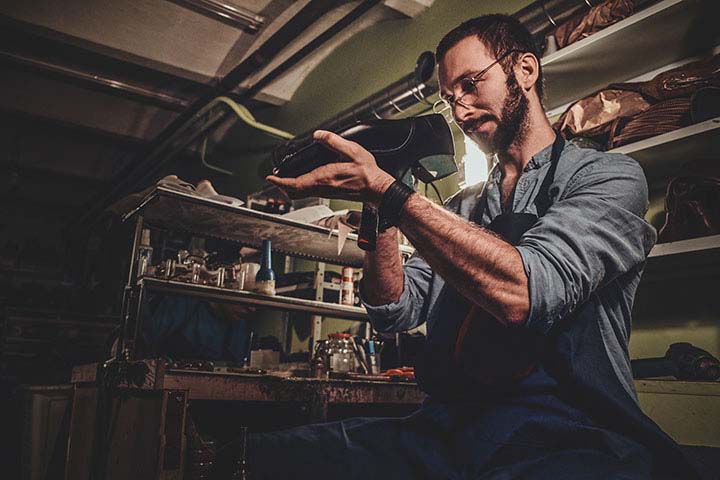
21 Feb What Makes Shoes & Boots Craftsmanship Stand the Test of Time?
In the world of footwear, there exists a notable divide between the fleeting allure of mass-produced shoes and the enduring appeal of those crafted using traditional leatherworking techniques. This third installment in our “Timeless Craft: Revolutionizing Leatherwork with Tradition” series delves into the craftsmanship behind shoes and boots that not only stand the test of time but also grow more valued with each step.
The Foundation of Footwear Craftsmanship
The art of shoe and boot making is steeped in history, with traditional methods that have been refined over centuries yet remain essential to quality craftsmanship today. Selecting the right materials, especially the type and quality of leather, plays a pivotal role in creating footwear that is both durable and comfortable, capable of withstanding years of wear while conforming to the wearer’s feet.
Essential Leatherworking Tools for Footwear
Crafting exceptional footwear requires specialized tools designed for precision and durability. Lasting pliers, shoemaking knives, and awls are just a few examples of instruments that enable artisans to achieve meticulous detail, ensuring each pair of shoes or boots is made to the highest standard.
Techniques That Endure
Techniques such as Goodyear welting, hand stitching, and leather molding are hallmarks of high-quality footwear craftsmanship. These time-honored methods not only contribute to the durability and repairability of shoes and boots but also allow for customization and personal touches that make each pair unique.
The Art of Customization
Traditional craftsmanship shines in the realm of customized footwear. Tailored to the individual’s foot shape and style preferences, custom shoes and boots offer unparalleled comfort and personal expression. This level of customization transforms footwear from mere accessories into cherished, timeless possessions.
Modern Innovations in Traditional Craft
While honoring the past, today’s artisans also embrace modern innovations that enhance the functionality of traditional footwear. Advanced leather treatments and ergonomic designs are among the contemporary enhancements that meet the demands of modern wearers without compromising the integrity of traditional craftsmanship.
The Impact of High-Quality Tools
The quality of tools used in leatherworking directly influences the caliber of the finished footwear. High-quality tools, such as those provided by C. S. Osborne , allow artisans to execute their craft with unparalleled precision and care, ensuring that every cut, stitch, and mold contributes to a masterpiece of durability and design.
Preserving Tradition in Modern Footwear
As the fashion industry evolves, the preservation of traditional shoe and boot making techniques becomes ever more crucial. These methods not only represent a lineage of artisanal skill but also offer a sustainable alternative to the disposable trends that dominate much of modern consumerism.
Conclusion
The craftsmanship behind traditionally made shoes and boots encompasses a rich blend of history, artistry, and innovation. By choosing handcrafted footwear, individuals invest in pieces that offer superior quality, unparalleled comfort, and timeless style—testaments to the enduring appeal of traditional craftsmanship.
Whether you’re an aspiring craftsman or a seasoned artisan, explore Osborne Leather Tools’ comprehensive range of leatherworking tools suited for footwear creation. Dive deeper into the art of shoe and boot making through our resources, tutorials, or workshops available at OsborneLeatherTools.com. Join us in celebrating and continuing the legacy of traditional footwear craftsmanship.


